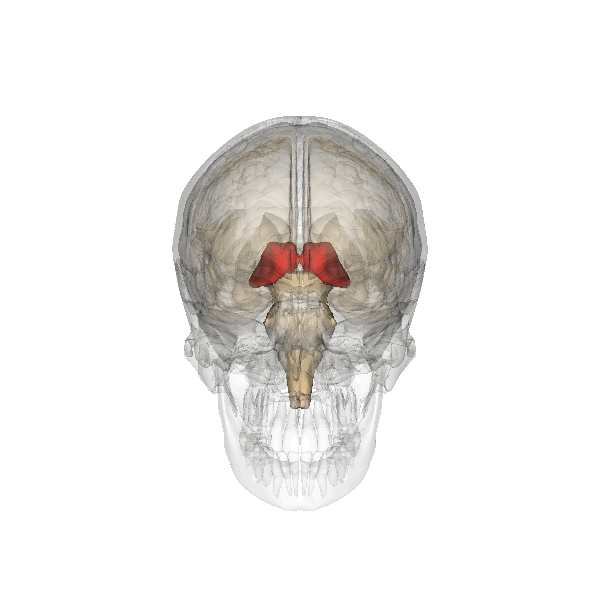 |
| from youtube |
Circulation of Cerebral Spinal Fluid
from: Umea UniversityStructures of the Brain
From: sliloh.com
Thalamus (caudacus and Tree of life)
Third ventricle
from Wikipedia
The third ventricle (ventriculus tertius) is one of four connected fluid-filled cavities comprising the ventricular system within the human brain. It is a median cleft between the two thalami, and is filled with cerebrospinal fluid (CSF).
It is in the midline, between the left and right lateral ventricles.
In casts of the ventricular system, a small 'hole' may be seen in the body of the third ventricle. This is formed where the two thalami are joined together at the interthalamic adhesion (not seen in all people).
Cerebrospinal Fluid
from: wikipedia
The CSF is produced at a rate of 500 ml/day. Since the brain can contain only 135 to 150 ml, large amounts are drained primarily into the blood through arachnoid granulations in the superior sagittal sinus. Thus the CSF turns over about 3.7 times a day. This continuous flow into the venous system dilutes the concentration of larger, lipoinsoluble molecules penetrating the brain and CSF.
| Reference ranges in CSF | |||
|---|---|---|---|
| Substance | Lower limit | Upper limit | Unit |
| Glucose | 50[3] | 80[3] | mg/dL |
| Protein | 15[3] | 40[4]–45[3] | mg/dL |
| RBCs | n/a[3] | 0[3] / negative | cells/µL |
| WBCs | 0[3] | 3[3] | cells/µ |
Thalamus
from Wikipedia
"every sensory system (with the exception of the olfactory system) includes a thalamic nucleus that receives sensory signals and sends them to the associated primary cortical area.
... For the visual system, for example, inputs from the retina are sent to the lateral geniculate nucleus of the thalamus, which in turn projects to the primary visual cortex (area V1) in the occipital lobe. The thalamus is believed to both process sensory information as well as relaying it...
Thalamic nuclei have strong reciprocal connections with the cerebral cortex, forming thalamo-cortico-thalamic circuits that are believed to be involved with consciousness. The thalamus plays a major role in regulating arousal, the level of awareness, and activity. Damage to the thalamus can lead to permanent coma.
from:garyosborn.webs.com
I was later pleased to find that Mavromatis, the author of the book, Hypnagogia (no doubt the most extensive work on the subject) states his opinion "that the Thalamus is the centre of consciousness and is the source of hypnagogic phenomena".
Intermediate Mass of the Thalamus
- not found in all brains
- apparently not an essential structure
- a connection between the right and left thalamic portions
- found crossing the third ventricle






No comments:
Post a Comment